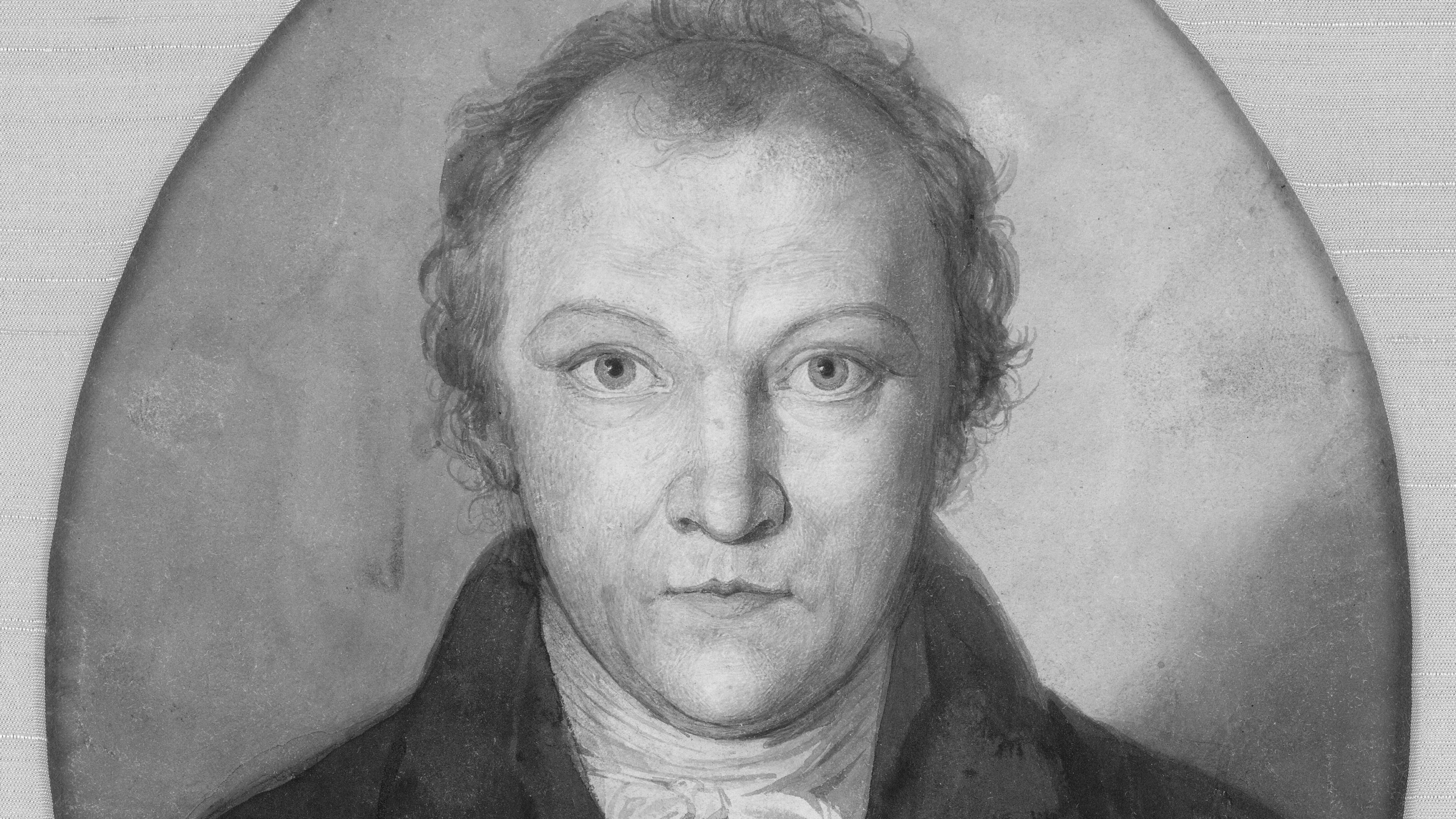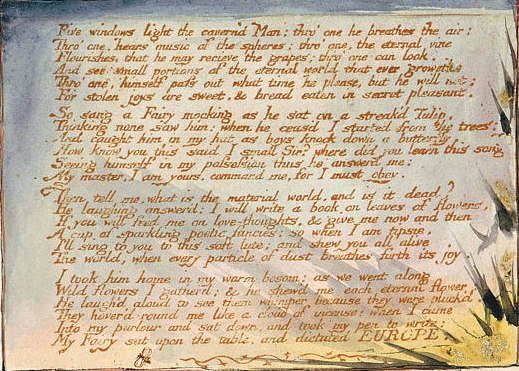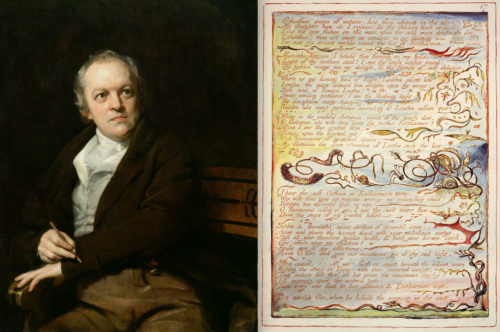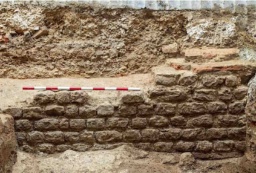Tate Britain has some themed events celebrating British artist William Blake, with the main exhibition running till 2 February 2020. There’s also a William Blake & Lunch two-course meal at the Rex Whistler Restaurant for those seeking dining options after their gallery visit. Their William Blake: A Live Literature Celebration last year September 20 sold out quickly so his popularity as an artist relevant to the 21st century is there to see. Attendees enjoyed an evening of music, dance, spoken word and visual imagery in the spirit of Blake’s work. So Blake fans better act quickly to ensure they don’t miss out this time.
A little more about this great artist below.
William Blake (1757-1827) was a poet, painter and printmaker who lived and worked in London all his life, and wrote his poem ‘London’ (below) about his home city. He was a headstrong and progressive thinker who would never settle comfortably at conventional schools so his parents enrolled him at Pars drawing school in The Strand. By the age of 15, he had committed to a seven-year apprenticeship with the prestigious engraver James Basire based in Great Queen Street near Lincoln Inn Fields.

William Blake, self portrait.
He later became a Royal Academy student but like many notable artists of the period he rebelled against this powerful institution’s principles and its president Joshua Reynolds. During this period of art history, the ‘unfinished painting’ look had become fashionable. Reynolds loved the style of Flemish Baroque painter Rubens whose drawings were vigorous and expressive without too much detail but Blake preferred the artistic precision of Italian artist Raphael. Interestingly, the Pre-Raphaelite movement which came after Blake sought the even greater artistic detail of the quattrocentro artists (1400-1499) who pre-dated Raphael but, nonetheless, were Blake fans with William Rossetti describing him as a ‘glorious luminary.’
As he developed his own style his work often dealt with challenging biblical and prophetic themes, although he was not a fan of the Church of England and other established religions. By 1826, he had produced a hand-painted first edition of his poem London. In 1965 this same poem would be set to an orchestral composition by Benjamin Britten who honoured it in his Songs and Proverbs of William Blake.
London
I wander thro’ each charter’d street,
Near where the charter’d Thames does flow.
And mark in every face I meet
Marks of weakness, marks of woe.
In every cry of every Man,
In every Infants cry of fear,
In every voice: in every ban,
The mind-forg’d manacles I hear
How the Chimney-sweepers cry
Every blackning Church appalls,
And the hapless Soldiers sigh
Runs in blood down Palace walls
But most thro’ midnight streets I hear
How the youthful Harlots curse
Blasts the new-born Infants tear
And blights with plagues the Marriage hearse
In light of the upcoming Brexit deadline on Jan 31st, below is a Blake painting titled Europe: A Prophecy. Perhaps filled with foreboding of the consequences of a split with Europe or is it merely timely and allegoric?

Europe: A Prophecy

Europe: A Prophecy, a few verses from the engraved poem
Europe: A Prophecy
More WHL art & exhibtions





